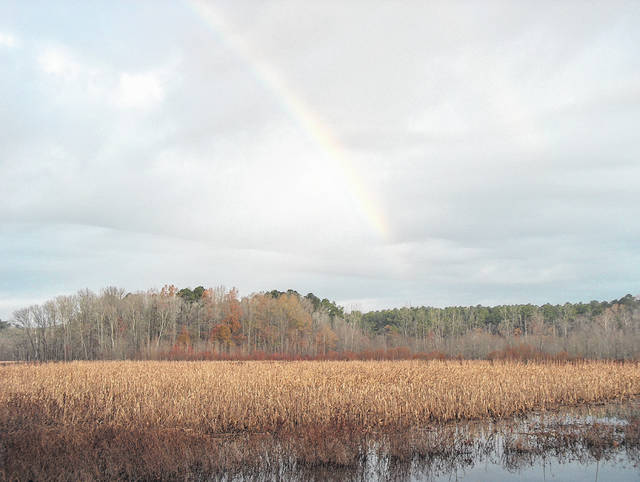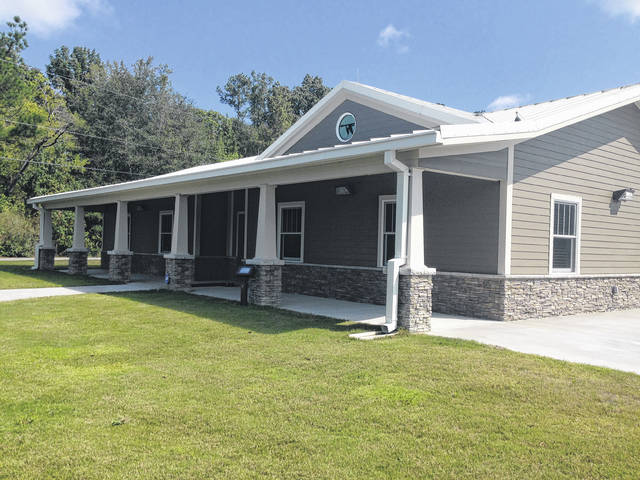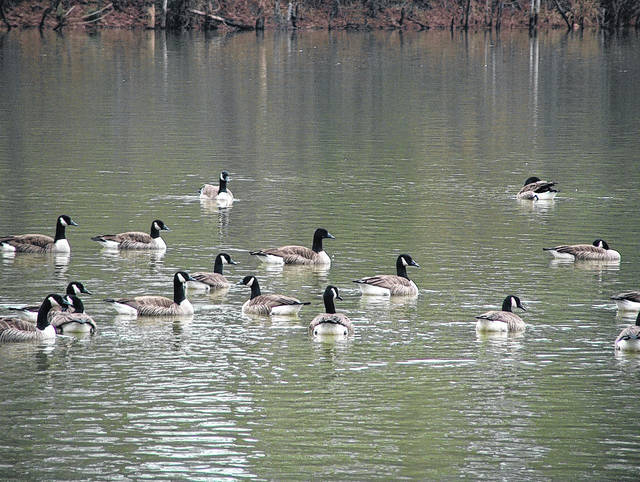WADESBORO- The 8,500 acres that make up the Pee Dee Natural Wildlife Refuge is home to some of the most diverse habitats in all of North Carolina. It’s located in both Anson and Richmond counties and situated in the Triassic Basin of the lower Piedmont. The refuge is part of the National Wildlife System, which is a network of lands dedicated to wildlife. Refuges like Pee Dee provide habitat for over 280 endangered and threatened species.
Within the Pee Dee Natural Wildlife Refuge, there are pine forests similar to what one would find in the Sandhills. There are outcrops and hills that are similar to the foothills. The Pee Dee River, named after the Pee Dee Indian Tribe, flows through the refuge and stretches into South Carolina. Bellow Falls is found in the Rockingham portion of the refuge, on the east side.
In January, waterfowl can be found concentrated on refuge ponds, lakes and impoundments across the refuge. One could even spot Canadian geese in a field or see a bald eagle glide across the sky. In February, waterfowl begin to migrate north while white-tailed deer bucks start to shed their antlers and ducks search for places to build their nests.
The refuge was established in 1963 on the heels of the Gaddy’s Wild Goose Refuge in Ansonville. The Wild Goose Refuge began in the fall of 1934 when Lockhart Gaddy, a former goose hunter, had a change of heart and used his four live decoys to attract geese to his pond. An estimated 10,000 Canadian geese and 1,000 ducks would spend the winter at Gaddy’s during the 1950s. They would close to the public in 1975 after the death of Mr. and Mrs. Gaddy.
The 1960s saw a decline in the numbers of waterfowl in the Anson and Richmond County areas of NC. However, the land next to both the Pee Dee River and brown creek proved to be an excellent habitat for both geese and ducks. The Pee Dee National Wildlife Refuge opened in Oct. 1963 with the support of both local and state governments.
“One of the reasons why they put the office here is because you have a grassland, hardwood swamp, freshwater marsh, and a pine forest all kind of coming together in the same place,” said Greg Walmsley, Refuge Manager. Walmsley has been with the Fish and Wildlife Service for 21 years and was the assistant manager at the refuge from 2002 until Fall 2019.
A lot of forest management work has been done in the time Walmsley has been at the refuge. In some cases, this has meant replanting trees, in others, thinning out trees. “I’ve seen some really nice improvements to our roads and public use facility. The road got paved in 2010. In 2017, we got this nice, new office,” said Walmsley.
The refuge is a popular destination for hunters. “Hunting in this area is a popular family past time. Being close to Charlotte, we get a lot of folks that come to the refuge here or lease land. Having a nice rural county this close to an urban center makes for an easy place for people to access,” said Walmsley.
Fishing is also popular. “We got about five ponds and some places where you can get access to the Pee Dee River and Brown Creek that are also pretty popular. The fishing season is from March 15 to Oct. 15. The Sullivan pond here and all the waters on the marsh area is open year-round,” said Walmsley.
Hunters and anglers aren’t the only visitors to the park, “We get a lot of bird watchers, and hikers. In the spring we do some work with the local Anson County Extension Office 4-H program. They bring out second and third-grade classes,” said Walmsley.
The Refuge also participates in cooperative farming. “So, basically we have several hundred acres that we farm, but we don’t do the farming ourselves,” explains Walmsley, who added, “We a staff of two people so we don’t have the manpower or resources to farm so we have local farmers do the work under the agreement that they pay us in the form of crop shares.”
A lot of those farmed fields are along the river. The farmers leave the crops behind and the land gets flooded for the ducks and geese. “We do a little bit of planting ourselves, but we don’t do a whole lot,” said Walmsley
“One of the things I like about my job is that every day is different. One day, I might be cleaning the restrooms, another I might be on a tractor, then on another, I might be teaching a classroom of 4-H students. I like the diversity of the job. Different tasks that keep it interesting,” said Walmsley.
The next time you’re free, take a drive down to the Pee Dee Natural Wildlife Refuge. Take in the sights. Breathe in the fresh air. Maybe even bring a fishing rod and be sure to stop by and pay Greg Walmsley a visit. He’d be glad to have you.



